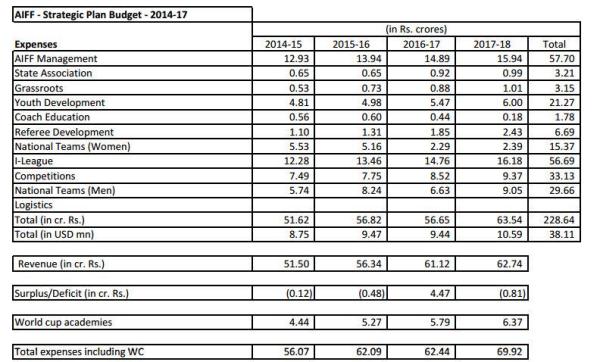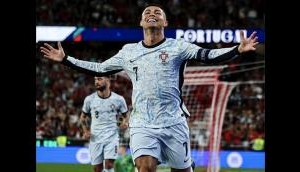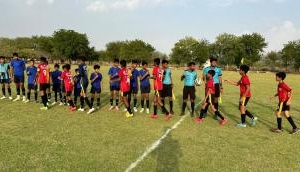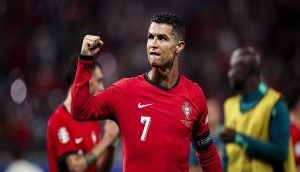
Months after the success of Indian Super League's first edition, the Indian national team's performance in the 2nd round of the 2018 FIFA World Cup qualifying stages has once again come as a stark reminder of the abysmal state of football in India. The Indian team currently lies at the bottom of Group D, after losing at home to Oman and Iran, and away from home to Guam.
India's hopes of qualifying for the 2018 World Cup are already up in the air, and as things stand, making it to the next round of 2019 Asian Cup qualifying may also turn out to be an uphill task for India. The knives are already out for new head coach Stephen Constantine, who has won only one game in his second stint in India so far.
However, looking deeper into the problems plaguing the Indian game, it is difficult to blame Constantine and his coaching staff for the dismal qualifying campaign, which has included a loss to Guam. The national team's performances are usually a fair reflection of the state of the game in a country; it is the end product of the country's internal football fabric. Given the situation of the domestic game in India, the country's international results should hardly come as a surprise.
A broken league system
The Indian Super League started off with much fanfare last October, but it is not India's national league: the I-League is. The latter, however, is in tatters at the moment. Two clubs playing in the league are on the verge of pulling out, while at least two more are seriously contemplating the possibility of the same. Most of the clubs are disenchanted with the lack of a road-map for the league, and seem to have run out of patience with the All India Football Federation (AIFF).
The management of the I-League remains under the hands of AIFF, while there is no revenue model in place as well. The entire model of the league means clubs can never grow in financial terms, thus putting off potential investors from the league. Over the years, many clubs have argued for making I-League a separate entity, which would subsequently allow for a separation of management from AIFF, as well as put in place a revenue-generating system.
Instead, the AIFF has given its marketing partners, IMG-Reliance, a free hand in deciding the course of the Indian football season. The start of the Indian Super League has led to the I-League being cut short to a little over four months. Some of the country's brightest footballing prospects have been robbed of competitive action for two-thirds of the year because of the defective scheduling of the I-League and ISL.
Skewed priorities of AIFF
Like many other sports governing bodies in India, AIFF has often being accused of being run by individuals with little or no interest for the sport. Over the years, it has done little to weed out that perception. A look at AIFF's Strategic Plan budget for the period 2014-17 shows what exactly is wrong with the organisation.

Earlier this year, Pune FC's Anthony D'Souza was injured while on duty with the national team. While AIFF was ideally required to pay for the treatment of the player, Kushal Das was quoted by Times of India as saying, "The insurance, if any, will be with the club but the AIFF do not have the resources to pay any compensation. The AIFF cannot pay him."
If the governing body of a sport spends a significant portion of the available money on itself, then there is something seriously wrong when it turns its back on the most important individuals of the game, the players, that too on the pretext of not having enough resources.
What lies ahead for Indian football?
"I would not be so unduly bothered about a team coming or going," Praful Patel recently told Times of India when asked about the impending pull-out of Pune FC and Bharat FC. Such a cynical remark to one of the biggest crises in Indian football illustrates a lack of concern towards the game on AIFF's part.
Today, two more clubs (apart from Pune FC and Bharat FC) are considering withdrawing from the league, a reliable source informed Catch. What message does AIFF's indifferent attitude send to them? The I-League has been crying out for major structural changes over the years. With AIFF failing to introduce the same, and due to the success of the ISL, it now looks quite clear that, as a brand, the I-League does not have a very bright future.
The overwhelming perception in Indian football circles today is that a majority of the ISL franchises will form the core of a single league system going forward. However, very few of these franchises are said to be willing to shift to a full-fledged league. The short format of the tournament is its USP, and with all franchises incurring losses in the first season, the possibility of a single-league system in the near future looks extremely thin at the moment.
The failure of the Indian league system will undoubtedly have a trickle down effect on the national team, and in such a scenario, head coach Stephen Constantine will be made the scapegoat by the governing body. However, given AIFF's attitude towards the domestic game, history will not be too forgiving towards Praful Patel and his colleagues.








![BJP's Kapil Mishra recreates Shankar Mahadevan’s ‘Breathless’ song to highlight Delhi pollution [WATCH] BJP's Kapil Mishra recreates Shankar Mahadevan’s ‘Breathless’ song to highlight Delhi pollution [WATCH]](https://images.catchnews.com/upload/2022/11/03/kapil-mishra_240884_300x172.png)

![Anupam Kher shares pictures of his toned body on 67th birthday [MUST SEE] Anupam Kher shares pictures of his toned body on 67th birthday [MUST SEE]](https://images.catchnews.com/upload/2022/03/07/Anupam_kher_231145_300x172.jpg)






